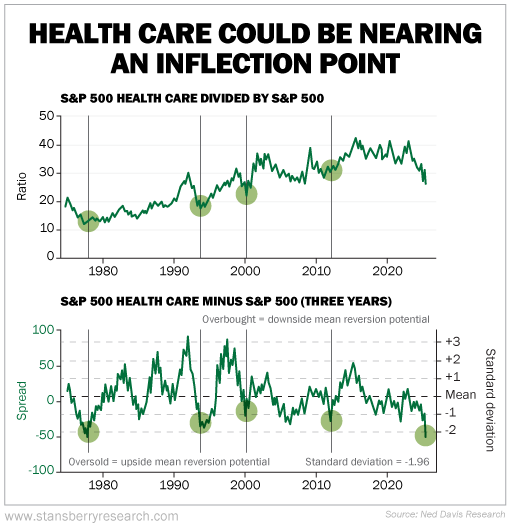
One Sector Is Ready to Pop
Japan is bathing Grandma and Grandpa with robots.
No, this isn't some scene out of a science-fiction story. It's real.
And it was born out of desperation...
You see, Japan's population is the oldest on Earth. More than 1 in 4 people there are at least 65 years old. And as its population continues to age, this will create a greater burden on the nation's health care system.
A 30-year-old might go to the doctor once or twice a year... while an 80-year-old may have seven prescriptions, three specialists, and a home nurse. All this adds up fast. And Japan's health care system is still not prepared – even after a $40 billion investment in long-term care facilities that kicked off in 1989.
But a large elderly population isn't the only reason Japan is concerned...
It also has one of the lowest birth rates in the developed world. And the number of babies born in Japan has declined for nine consecutive years... reaching a record low of 720,988 last year.
Because fewer people have been getting married there since the COVID-19 pandemic, this decline will likely continue to accelerate.
Fewer babies means fewer workers. And fewer workers means fewer people to care for the swelling ranks of retirees.
This year, Japan is predicted to face a shortfall of 370,000 caregivers.
That's where the robots come in...
By 2018, the Japanese government had spent more than $300 million on research and development (R&D) on robots to take care of the elderly. These robots can help dress older people, lift them into bed, monitor their vitals, and even assist with bathing.
Today, nursing homes in Osaka are staffed with AI-powered robots that can track eye movements and detect early signs of stroke.
Across the country, you'll find eerily lifelike caregiving bots outfitted with silicone "skin" designed to make lonely seniors feel less alone.
And in Yokohama, robotic exoskeletons are even being used to help aging warehouse workers keep lifting boxes into their 70s.
In other words, the robots aren't replacing humans. There simply aren't enough humans left to do these jobs.
And these robots are just part of the investment Japan will need to make in its health care system.
Between 2000 and 2021, its health care spending as a percentage of gross domestic product ("GDP") increased from 7% to nearly 11%. And as its population continues to age, this spending will only grow.
The U.S. is on a similar path as Japan – just a few decades behind.
Already, middle-aged adults outnumber children. But the U.S. will reach a new milestone in 2034... That's when the U.S. Census Bureau projects that people aged 65 and older will roughly match America's 77 million children.
This means we'll need to spend a lot more on health care.
Today, more than a third of total U.S. health care spending goes toward people over 65.
Annual U.S. health care expenditures are at a new high of $4.5 trillion. And that number is expected to rise to $8 trillion by 2035, more than 20% of projected GDP.
We're not equipping nursing homes with robotic bath assistants just yet... but we're also feeling the burden to the system.
Hospital emergency rooms are overwhelmed. Rural counties are facing doctor shortages. And long-term care facilities are so full, some families are placing loved ones on waiting lists years in advance.
Think about your own experience with the health care system... If you're like most folks, you'll have a war story or two.
America's massive demographic shift creates an opportunity for one of our favorite sectors. When tens of millions of people need more care, someone has to provide it. That means more demand for medical devices, diagnostic tools, surgical robots, and even digital platforms that help doctors do more with less.
It has admittedly been a tough couple of years for health care investors... Investment in biotech has slowed since the pandemic ended. And higher interest rates make it harder for smaller biotech firms to borrow money.
But we don't expect the industry to be down for long...
You see, drug patents are finite. They expire. And when they do, that revenue has to be replaced if a company wants to keep growing. It's the nature of the industry.
Biotech R&D is central to refreshing product portfolios. And we are seeing signs of recovery...
Excluding the 2020 and 2021 highs after the pandemic, biopharma funding hit a 10-year high in 2024 at $102 billion. That's up 44% from 2023 levels.
The number of new clinical trials rose in 2024, after seeing declines in 2022 and 2023.
And according to forecasting and analytics company Evaluate Pharma, the global pharmaceuticals industry pumped nearly $288 billion into R&D last year. That's up about 2% from 2023.
On a more technical level, the health care sector is deeply oversold.
It has lagged the S&P 500 Index by a staggering 42% over the past three years. When we've seen this level of extreme underperformance in the past, health care has typically rallied. Take a look...

Health care stocks have been out of favor lately. But we see things turning around. Make sure you have some exposure in your portfolio.
One of the easiest ways to own health care is through the Health Care Select Sector SPDR Fund (XLV).
XLV is an exchange-traded fund that holds 60 of the biggest health care stocks. It has a low expense ratio of 0.08% and gives diversification across many areas of health care.
Some of its top holdings include Eli Lilly (LLY), Johnson & Johnson (JNJ), AbbVie (ABBV), Abbott Laboratories (ABT), and Boston Scientific (BSX).
Consider owning XLV today before this sector recovers and rallies.
And on the topic of health care, our founder Porter Stansberry has a new warning involving Medicare...
Between inflation, a weakening U.S. dollar, and massive spending on mandatory programs like Medicare and Social Security, the federal government is in trouble. It's struggling to pay the interest on its debt. And Porter believes a default is likely within the next four years.
This would mean total devastation for both the economy and your portfolio. Your retirement savings could be completely wiped out if you don't prepare. Click here to learn how to protect yourself.
What We're Reading...
- The "people washer" arrives in Japan: Here is the robotic shower.
- Undeterred by political and economic headwinds, the pharma sector ups R&D investment in 2024 and beyond.
- Something different: Elon Musk does an immediate 180 on President Donald Trump as soon as Los Angeles riots rage.
Here's to our health, wealth, and a great retirement,
Dr. David Eifrig and the Health & Wealth Bulletin Research Team
June 11, 2025
